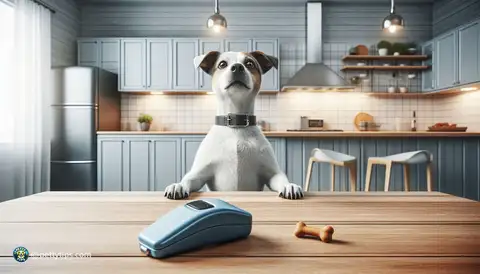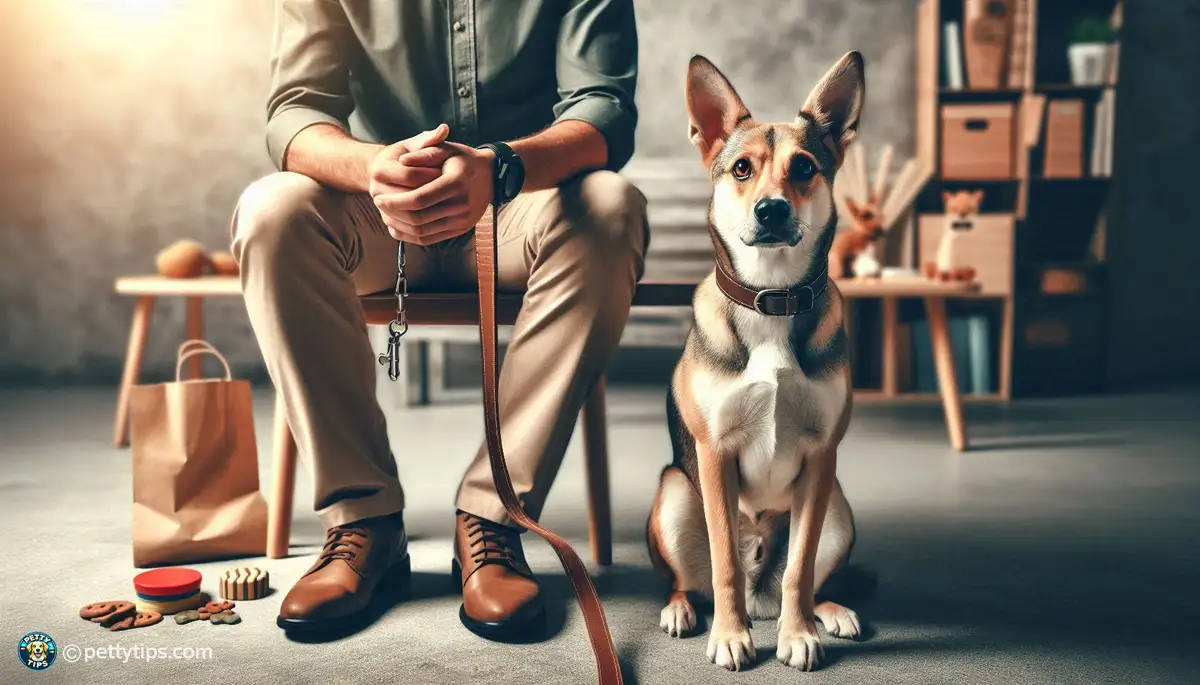
Clicker Training for Counter Surfing: Discouraging Food Theft
Lottie Thompson - Aug 29, 2024 - 6 min read


Dogs are naturally inclined to jump up as a form of greeting or to seek attention. In the wild, puppies jump up to their mother for comfort or to signal hunger. This behavior persists into adulthood, where they may jump on humans as a way to establish social hierarchy or simply to show affection.
jumping up can be inadvertently reinforced by human reactions. When a dog jumps up and receives attention or affection, they learn that this behavior leads to positive outcomes. This reinforcement strengthens the behavior, making it more likely to occur in the future.
Without proper training and guidance, dogs may not understand that jumping up is undesirable behavior. They may continue to engage in it if it has never been addressed or if inconsistent responses from humans have confused them.
High-energy dogs or those experiencing excitement may be more prone to jumping up. They may lack impulse control in these moments, leading them to jump on people as a way to release excess energy or express their enthusiasm.
Consistent training is essential for addressing jumping up behavior. Everyone in the household should be on the same page regarding how to respond to jumping up, and the rules should be consistently enforced.
Using positive reinforcement techniques can help discourage jumping up while reinforcing desired behaviors. When the dog greets people calmly without jumping, they should be praised and rewarded with treats or verbal praise.
Redirecting a dog's attention can be an effective way to prevent jumping up. Before the dog has a chance to jump, give them a command, such as "sit" or "down," and reward them for complying. This redirects their focus onto a more appropriate behavior.
It's important not to inadvertently reinforce jumping up by giving the dog attention or affection when they engage in this behavior. Ignoring the dog or turning away can help communicate that jumping up will not lead to the desired outcome.
Teaching basic obedience commands, such as "sit," "stay," and "down," can help prevent jumping up. Practice these commands regularly in various situations to reinforce them and encourage the dog to respond appropriately when greeting people.
Gradual desensitization to triggers that prompt jumping up can help modify the behavior. This involves exposing the dog to situations where they might typically jump up but at a lower intensity or in a controlled setting. Over time, the dog learns to remain calm in these situations.
Practice controlled greetings with the dog to teach them appropriate greeting behavior. Have a friend or family member approach the dog calmly and reward them for remaining calm and not jumping up. Gradually increase the level of excitement during greetings as the dog learns to control their behavior.
Using a leash during greetings can provide additional control over the dog's behavior. Keep the dog on a short leash and prevent them from jumping up by gently guiding them into a sit or down position. Reward them for complying with the command.
Ensure the dog receives an adequate amount of physical exercise and mental stimulation to help reduce excess energy that may contribute to jumping up behavior. Regular walks, play sessions, and interactive toys can help keep the dog mentally and physically engaged.
Proper socialization with other dogs and people can help prevent jumping up by teaching the dog appropriate social behavior. Expose the dog to a variety of environments and situations from a young age to help them become confident and well-adjusted.
Implement strategies for managing the dog's excitement levels, particularly in situations where jumping up is more likely to occur. This may involve providing a calm environment, using calming techniques such as massage or gentle petting, or engaging the dog in calming activities before potentially exciting events.
If the jumping up behavior persists despite efforts to address it, consider seeking assistance from a professional dog trainer or behaviorist. They can provide personalized guidance and support to help modify the behavior effectively.
Addressing jumping up behavior in dogs requires patience, consistency, and positive reinforcement. By understanding the reasons behind the behavior and implementing appropriate training techniques, owners can help their dogs learn more appropriate ways to greet people and express their excitement. With dedication and effort, jumping up can become a thing of the past, replaced by calm and controlled greetings that strengthen the bond between dogs and their human companions.